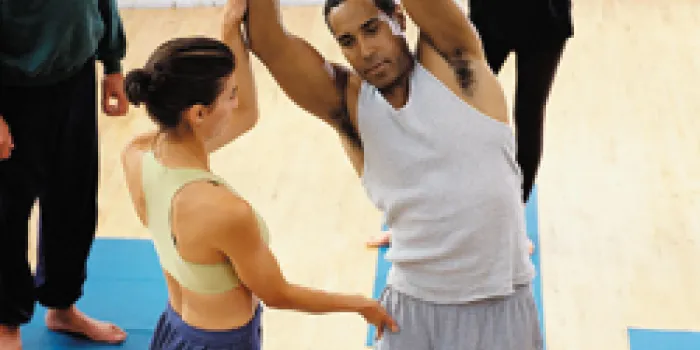Yoga studios are popping up across the country these days. For people with bleeding disorders, that’s a good thing. Yoga works your muscles and increases your flexibility, which help to prevent injuries. It also improves your balance and helps to reduce stress by simultaneously exercising your body and relaxing your mind through poses and controlled breathing. Such regular exercise is a cornerstone of the “Do the 5!” campaign, a joint effort of the National Hemophilia Foundation and the Centers for Disease Control and Prevention, which promotes behaviors that can reduce or prevent complications from hemophilia.
“Yoga is an excellent, nonimpact exercise for people with bleeding disorders, with a relaxation component that helps them manage stress,” says Petra Place, PT, DPT, of the Dell Children’s Medical Center of Central Texas in Austin.
Skye Peltier, a 37-year-old with severe factor VII deficiency, discovered yoga several years ago when she was looking for a workout that would build both strength and flexibility. She found that yoga did that and more.
“By connecting my mind and my breathing with stretching and strengthening, yoga’s relaxation techniques eased both pain and stress,” says Peltier. She is a physician’s assistant at Children’s Hospitals and Clinics of Minnesota’s Hemophilia Treatment Center in Minneapolis.
Get started by signing up for a beginner’s class that focuses on gentle poses and breathing, says Place. Such classes allow more time for students to become acquainted with yoga poses. These poses—with exotic names like downward facing dog, swan and cobra—gently work your muscles as you hold them and as you progress from one pose to the next. The guided breathing helps you stay focused on what you are doing. Remember: Your body will need time to adapt to yoga’s demands, so it is important to go slowly at first to avoid muscle strain.
After practicing yoga for a short while, you will start to notice that you can do things you were unable to do before, such as touch your toes. That’s a big deal, says Place. The increased flexibility that yoga provides can make other physical activities safer and less strenuous.
Before starting any class, Place says, it is essential to find a teacher who will listen to your concerns and understand any health issues you have, such as problem joints that are more susceptible to injury. A good teacher will show you poses that avoid such trouble spots. Finally, you want a teacher who is not going to push you past your limits.
Physical therapists are often the ideal instructors, because they are familiar with physiology and disease processes, says Place. She says they are best equipped to understand their clients’ special needs.
You may have to sample a few yoga classes before you find one that’s right for you. Place prefers yoga studios to large gyms or health clubs because they are often smaller and teachers can give attention to individual students. Many studios offer introductory specials, such as free trial classes.
Once you have enrolled at a studio you like, make going to class part of your weekly routine. “Yoga strengthens muscles, improves balance and helps you to relax, but you need to practice at least three times a week in order to see those benefits,” says Place.
If you want to practice more, Place advises that you vary your routine so you are not always working the same muscles. Otherwise, you may get into trouble. “There’s a definite risk of bleeding if you do a weight-bearing pose and overdo it. You can pull or tear muscles,” says Place. “It’s important to take breaks.”
Although yoga is a low-risk exercise, it is not for everyone in the bleeding disorders community. Julia McDougal, a student at Brigham Young University in Provo, Utah, practiced yoga for six months. She has type 1 von Willebrand disease and says yoga was great for building strength, balance and flexibility, but the poses put too much stress on her wrists.
“Yoga is a great way to get into shape if you are not used to exercising. It’s really safe, and it’s really gradual,” says McDougal, 19. “But it hurts your wrists if they are an issue.”
Before starting yoga, talk to your physical therapist about your concerns and get his or her advice on what to do—and what not to do—to get the best and safest workout. Then you are ready to go. No special equipment is required; most studios will provide you with a mat. Be sure to wear comfortable, breathable clothes.
“Look at yoga as good for your mind and body,” says Peltier. “And remember that there is no perfect way to do it.”

